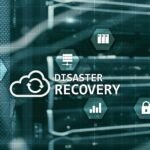Table of Contents
In the rapidly evolving landscape of modern medicine, the Internet of Things (IoT) is emerging as a game-changer. By connecting devices and systems, IoT is revolutionizing healthcare in ways that were once the stuff of science fiction. From remote patient monitoring to intelligent wearables, these innovations are enhancing patient care, improving operational efficiency, and even saving lives. Let’s dive into five unique IoT innovations that are transforming healthcare.
Remote Patient Monitoring
Thanks to Internet of Things, remote patient monitoring (RPM) is one of the most significant advancements in healthcare. By using connected devices such as blood pressure monitors, glucose meters, and heart rate sensors, healthcare providers can monitor patients’ vital signs in real-time, even when they’re miles away.
Examples of Devices and Technologies:
- Blood pressure cuffs that transmit data to a patient’s electronic health record (EHR)
- Continuous glucose monitors for diabetes management
- Wearable ECG monitors for tracking heart health
Benefits:
- Patients enjoy the comfort of staying at home while still receiving top-notch medical care.
- Healthcare providers can detect and address issues before they become critical, reducing hospital admissions and improving outcomes.
Smart Wearables
Smart wearables are not just trendy gadgets; they are powerful tools for maintaining health and preventing disease. These devices, including fitness trackers and smartwatches, monitor a range of health metrics, such as heart rate, sleep patterns, and physical activity levels.
Types of Wearable Devices:
- Fitness trackers (e.g., Fitbit, Garmin)
- Smartwatches with health monitoring features (e.g., Apple Watch)
- Bright clothing with embedded sensors
Impact on Preventive Care and Chronic Disease Management:
- Users can gain insights into their daily habits and make healthier lifestyle choices.
- Healthcare providers can use data from wearables to monitor patients with chronic conditions and adjust treatments accordingly.
Telemedicine and Virtual Consultations
Telemedicine has been a lifeline during the COVID-19 pandemic, and IoT has played a crucial role in its success. IoT-enabled devices allow doctors to conduct virtual consultations and monitor patients remotely, making healthcare more accessible than ever.
Examples of IoT-Enabled Devices:
- Smart stethoscopes that transmit heart and lung sounds to doctors during virtual visits.
- Digital otoscopes for remote ear examinations
- Connected thermometers and blood pressure monitors
Advantages:
- Patients can obtain medical advice and treatment from the comfort of their homes.
- Reduced strain on healthcare facilities and increased convenience for patients.
IoT in Hospital Management
Hospitals are complex environments with many moving parts. IoT can streamline operations, improve patient care, and enhance the overall experience.
Enhancing Operational Efficiency:
- Real-time monitoring of medical equipment and supplies
- Automated inventory management to prevent shortages
- Monitoring of environmental conditions (e.g., temperature, humidity) to maintain optimal conditions for patients and medications
Improving Patient Experience and Care Coordination:
- Intelligent beds that monitor patient movement and adjust for comfort
- Location tracking for patients and staff to improve response times
- Integration of patient data from various sources for better care coordination
Personalized Treatment Plans
One of the most promising aspects of IoT in healthcare is its ability to facilitate personalized treatment plans. By collecting and analyzing vast amounts of data, healthcare providers can tailor treatments to individual needs.
Data Collection and Analysis:
- Wearable devices and sensors gather continuous health data
- Advanced algorithms analyze this data to identify trends and anomalies
Tailoring Treatment Plans:
- Personalized medication regimens based on genetic information and health data
- Customized fitness and nutrition plans to manage chronic conditions
Case Studies:
- Patients with diabetes receiving tailored insulin dosages based on real-time glucose levels
- Cancer patients benefiting from treatments designed around their genetic profiles
Smart Implants and Prosthetics
IoT is making strides in the field of implants and prosthetics, offering new hope to patients with mobility issues.
Innovations in Smart Implants:
- Pacemakers with remote monitoring and adjustment capabilities
- Cochlear implants that connect to smartphones for better sound quality
Benefits of IoT-Enabled Prosthetics:
- Prosthetic limbs that provide sensory feedback to users
- Improved control and functionality, leading to a better quality of life
Enhancing Elderly Care
As the global population ages, Internet of Things offers valuable solutions for elderly care, allowing seniors to live more independently and safely.
IoT Solutions for Aging Populations:
- Smart home systems that detect falls and alert caregivers
- Wearable devices that monitor vital signs and activity levels
Impact on Independence and Quality of Life:
- Seniors can stay in their own homes longer, reducing the need for assisted living
- Families and caregivers gain peace of mind knowing their loved ones are safe
Mental Health Support
Mental health is a critical component of overall well-being, and Internet of Things is making significant contributions in this area.
IoT Applications in Mental Health Monitoring:
- Wearable devices that track sleep patterns, activity levels, and stress indicators
- Apps that provide real-time feedback and interventions for anxiety and depression
Examples of Devices and Apps:
- Smartwatches with stress monitoring features
- Mental health apps like Headspace and Calm that use IoT data to personalize user experiences
Benefits:
- Patients receive continuous support and monitoring
- Healthcare providers can intervene early and adjust treatments as needed
Emergency Response and Management
In emergency medical situations, every second counts. Internet of Things enhances emergency response and management, potentially saving lives.
IoT in Emergency Medical Services:
- Connected ambulances that transmit patient data to hospitals en route
- Drones delivering medical supplies to remote or disaster-stricken areas
Improving Response Times and Care Quality:
- Real-time tracking of emergency vehicles for faster dispatch
- Remote monitoring of patient vitals during transport
Examples of Life-Saving Technologies:
- Automated external defibrillators (AEDs) equipped with Internet of Things connectivity
- Smart inhalers for asthma patients that alert emergency contacts during severe attacks
Challenges and Concerns
While Internet of Things holds immense potential, it also comes with challenges and concerns that need to be addressed.
Data Privacy and Security Issues:
- Protecting patient data from cyber threats
- Compliance with regulations such as HIPAA
Technical Challenges and Interoperability:
- Integrating various IoT devices and systems
- Ensuring reliable connectivity and data transmission
Addressing Patient and Provider Concerns:
- Building trust in IoT technologies
- Providing adequate training for healthcare providers
Future of IoT in Healthcare
The future of IoT in healthcare looks promising, with emerging trends and technologies poised to transform the industry further.
Emerging Trends and Technologies:
- Increased use of AI and machine learning to analyze health data
- Development of more sophisticated wearable devices and sensors
Predictions for the Next Decade:
- Greater adoption of telemedicine and remote monitoring
- Expanded use of Internet of Things in personalized medicine
Potential Impact on Global Healthcare Systems:
- Improved access to quality healthcare worldwide
- Reduced healthcare costs through preventive care and efficient management
Conclusion
IoT is undeniably transforming healthcare, offering innovative solutions that enhance patient care, improve operational efficiency, and save lives. From remote patient monitoring to innovative implants, these technologies are paving the way for a healthier future. As we continue to embrace Internet of Things, the potential for further advancements is limitless, promising a new era of connected, personalized, and efficient healthcare.









